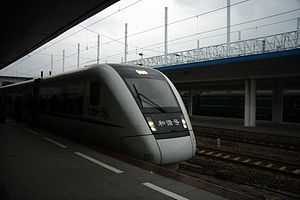Fuzhou–Xiamen Railway
 Hangzhou–Fuzhou–Shenzhen High-Speed Railway Fuzhou–Xiamen Section 杭福深高速铁路福厦段 | ||||||||||||||||||||||||||||||||||||||||||||||||||||||||||||||||||||||||||||||||||||||||||||||||||||||||||||||||||||||||||||||||||||||||||||||||||||||||||||||||||||||||||||||||||
|---|---|---|---|---|---|---|---|---|---|---|---|---|---|---|---|---|---|---|---|---|---|---|---|---|---|---|---|---|---|---|---|---|---|---|---|---|---|---|---|---|---|---|---|---|---|---|---|---|---|---|---|---|---|---|---|---|---|---|---|---|---|---|---|---|---|---|---|---|---|---|---|---|---|---|---|---|---|---|---|---|---|---|---|---|---|---|---|---|---|---|---|---|---|---|---|---|---|---|---|---|---|---|---|---|---|---|---|---|---|---|---|---|---|---|---|---|---|---|---|---|---|---|---|---|---|---|---|---|---|---|---|---|---|---|---|---|---|---|---|---|---|---|---|---|---|---|---|---|---|---|---|---|---|---|---|---|---|---|---|---|---|---|---|---|---|---|---|---|---|---|---|---|---|---|---|---|---|---|
 .A CRH1B high-speed train in Fuzhou. | ||||||||||||||||||||||||||||||||||||||||||||||||||||||||||||||||||||||||||||||||||||||||||||||||||||||||||||||||||||||||||||||||||||||||||||||||||||||||||||||||||||||||||||||||||
| Overview | ||||||||||||||||||||||||||||||||||||||||||||||||||||||||||||||||||||||||||||||||||||||||||||||||||||||||||||||||||||||||||||||||||||||||||||||||||||||||||||||||||||||||||||||||||
| Type | CRH | |||||||||||||||||||||||||||||||||||||||||||||||||||||||||||||||||||||||||||||||||||||||||||||||||||||||||||||||||||||||||||||||||||||||||||||||||||||||||||||||||||||||||||||||||
| Locale | China | |||||||||||||||||||||||||||||||||||||||||||||||||||||||||||||||||||||||||||||||||||||||||||||||||||||||||||||||||||||||||||||||||||||||||||||||||||||||||||||||||||||||||||||||||
| Operation | ||||||||||||||||||||||||||||||||||||||||||||||||||||||||||||||||||||||||||||||||||||||||||||||||||||||||||||||||||||||||||||||||||||||||||||||||||||||||||||||||||||||||||||||||||
| Owner | China Railway | |||||||||||||||||||||||||||||||||||||||||||||||||||||||||||||||||||||||||||||||||||||||||||||||||||||||||||||||||||||||||||||||||||||||||||||||||||||||||||||||||||||||||||||||||
| Operator(s) | China Railway High-speed | |||||||||||||||||||||||||||||||||||||||||||||||||||||||||||||||||||||||||||||||||||||||||||||||||||||||||||||||||||||||||||||||||||||||||||||||||||||||||||||||||||||||||||||||||
| Technical | ||||||||||||||||||||||||||||||||||||||||||||||||||||||||||||||||||||||||||||||||||||||||||||||||||||||||||||||||||||||||||||||||||||||||||||||||||||||||||||||||||||||||||||||||||
| Line length | 274.9 km (171 mi) | |||||||||||||||||||||||||||||||||||||||||||||||||||||||||||||||||||||||||||||||||||||||||||||||||||||||||||||||||||||||||||||||||||||||||||||||||||||||||||||||||||||||||||||||||
| Track gauge | 1,435 mm (4 ft 8 1⁄2 in) | |||||||||||||||||||||||||||||||||||||||||||||||||||||||||||||||||||||||||||||||||||||||||||||||||||||||||||||||||||||||||||||||||||||||||||||||||||||||||||||||||||||||||||||||||
| Electrification | 50Hz 25,000V | |||||||||||||||||||||||||||||||||||||||||||||||||||||||||||||||||||||||||||||||||||||||||||||||||||||||||||||||||||||||||||||||||||||||||||||||||||||||||||||||||||||||||||||||||
| Operating speed | 200 km/h (124 mph) | |||||||||||||||||||||||||||||||||||||||||||||||||||||||||||||||||||||||||||||||||||||||||||||||||||||||||||||||||||||||||||||||||||||||||||||||||||||||||||||||||||||||||||||||||
| ||||||||||||||||||||||||||||||||||||||||||||||||||||||||||||||||||||||||||||||||||||||||||||||||||||||||||||||||||||||||||||||||||||||||||||||||||||||||||||||||||||||||||||||||||
| Fuzhou-Xiamen Railway | |
|---|---|
| Line length: | 274.9 km (171 mi) |
| Track gauge: | 1,435 mm (4 ft 8 1⁄2 in) |
| Maximum speed: | 200 km/h (124 mph) |
The Fuzhou–Xiamen Railway (simplified Chinese: 福厦铁路; traditional Chinese: 福廈鐵路; pinyin: Fúxià Tiělù) is a dual-track, electrified, high-speed rail line in eastern China. The line, also known as the Fuxia Railway, is named after its two terminal cities Fuzhou and Xiamen, both coastal cities in Fujian Province. The line has a total length of 274.9 kilometres and forms part of China's Southeast Coast High-Speed Rail Corridor.[1] Construction began in 2005, and the line entered into operation on April 26, 2010. Trains running on the line reach top speeds of 250 kilometres per hour.
Route

The Fuzhou–Xiamen Railway follows the rugged but prosperous coast of Fujian with 14 stations between Fuzhou South Station and Xiamen Station including Fuqing, Hanjiang, Putian, Xianyou, Quanzhou, Jinjiang, Xiamen North, Xinglin and Gaoqi. Bridges and tunnels account for over 37% of the line's total length.
History
The Fuzhou–Xiamen Railway is the first railway between Fujian's two important most cities, Fuzhou, the provincial capital, and Xiamen, the province's most prosperous city. Most high-speed rail lines in China follow the routes of older conventional railroads, but there were no railways on the southeast coast prior to the introduction of high-speed rail. Historically, the southeast coastal region relied on maritime transportation, and rugged terrain made railway construction more expensive. In the first half of the 20th century, warfare and political instability delayed railway construction. During the Cold War, the southeast coast faced the threat of invasion from Republic of China on Taiwan and all railways were built inland. Only when political tensions across the Taiwan Strait eased in the late 1990s did planning of the Fuzhou-Xiamen railway take place.
The project was approved by the State Council in July 2004. Construction began in September 2005 and was completed in December 2009. Commercial operation began on April 26, 2010. Unlike later Chinese high-speed rail lines which were built to higher speed standards of 300 or 350 km/h, the Fuzhou-Xiamen Line was built to the 250 km/h standard with the capacity for upgrade to 300 km/h. The opening of high-speed rail line greatly reduced travel times by rail on the coast of Fujian. Passenger train service on the line average 200 km/h. The trip from Fuzhou to Xiamen on the non-stop express train takes 1 hr. 28 min. compared to the 10-hour train ride via railroads that cut inland.[2] The trip by long-distance bus on the express highway takes 2.5 to 4 hours.[2]
In the first year of operation from 2010 to 2011, the line carried over 18 million passengers, averaging 50,000 per day, and reported occupancy rates exceeding 100%[3]
Competiveness
Occupancy rate on the Fuxia Line is among the highest of China's high-speed railways.[3] The line offers competitive fares and passes through large cities with well-developed public transportation and high demand for intercity travel. As of February 2011, a regular ticket from Fuzhou to Xiamen costs ¥85, and a first class ticket costs ¥103.[3] Drivers making the same trip by express highway will pay ¥300-400 including gas and tolls, and spend 1.5 more hours on the road.[3] During the Lunar New Year festival, the peak season for intercity travel, the number of long distance bus trips between Fuzhou and Xiamen fell from 98 per day in 2010 to just 7 per day in 2011.[3] Long distance bus ridership from Fuzhou to Xiamen fell by 83%, to Quanzhou by 63%, to Jinjiang by 50%, to Shishi by 25% and to Putian by 38%.[3]
Rail connections
- Fuzhou: Wenzhou–Fuzhou Railway, Nanping–Fuzhou Railway, Xiangtang–Putian Railway
- Putian: Xiangtang–Putian Railway
- Quanzhou: Zhangping–Quanzhou–Xiaocuo Railway
- Xiamen: Longyan–Xiamen Railway, Xiamen–Shenzhen Railway
See also
- List of railways in China
References
- ↑ (Chinese) "闽首条高速铁路-福厦铁路建成通车(图)" 2010-01-01
- ↑ 2.0 2.1 (Chinese) "驾“巨龙”八闽追风 走天下海西纵横" 福建日报 2011-06-08
- ↑ 3.0 3.1 3.2 3.3 3.4 3.5 (Chinese) "福厦高铁一年发送旅客超1800万 上座率超过100%" 2011-04-26
| |||||||||||||||||
| ||||||||||||||||